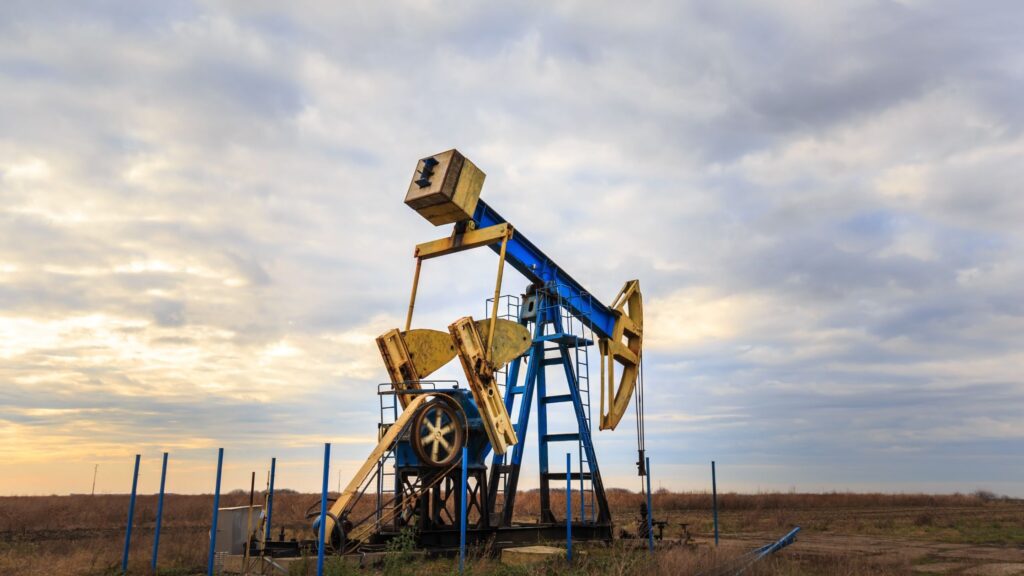Also, the format of royalty statements varies among oil and gas production operators. However, any royalty statement must have essential accounting information stating the amount of oil/gas produced by a well, the owner’s interest, revenue share, and more.
This guide will provide an insight into reading an oil and gas royalty statement.
Why it is important to understand oil and gas royalty statements
To make it difficult for readers to detect errors and miscalculations, some production companies make their revenue statements hard to read. So it’s crucial to learn how to understand mineral rights statements.
What is a Royalty Statement and its parts?
A royalty statement is sent to a royalty owner, usually monthly. The document details the relationship between, for example, an oil company and a person’s mineral ownership interest. There is no standard format for royalty documents mineral owners receive. However, some essential data must be present in any royalty statement.
Mineral owners must review and keep royalty statements for accounting purposes. The following are some key terms found in a typical royalty statement.
Basic Information
Every royalty statement must contain basic information, including:
- Date of the Statement
- Name and Address of the Lessee
- Property Description
- Royalty Interest Owner,
Whole Well Figures
These are overall figures for a specific well, and the expenses/revenue are shared by the various mineral interest owners.
- Production Volume
- Gross Revenue
- Operating Costs
- Production Taxes
- Advance Payments
- Other Deductions
Owner Figures
The individual Royalty Figures for the owner.
- Net interest in the production
- Share of the value of the production
- Tax liability
- Deductions
- Net Revenue paid to the owner
What are the different Oil & Gas Royalty Statement Sections?
Different oil and gas production operators have their own royalty statements. Yet, some information and sections are typical among all such documents:
Property
Identifies the well producing and includes details of the lease name, identification number, county, state, well name, and other data. These details verify the authenticity of the well’s production.
Production Date or Month
The date the royalty check was issued. Oil companies often cut royalty checks two months in arrears. Gas companies usually settle three months in arrears. Oil and gas royalties follow the standard accounting period of the producer and must be recorded every month.
Producing Well Identification
All wells come with codes and identifying numbers. The information includes the well name, lease name, state name, tract name, and more. These make it easy to identify a producing entity. In many cases, owners with interests in multiple properties must have their various interests identifiable on the statement.
Interest Type
There are various types of mineral interests an individual can hold.
- R – Royalty Interest: A payment made to the owner of land or minerals for the right to extract them. But the owner has no part in the extraction process and bears no cost or risk associated with the operation.
- WI – Working Interest: An interest that a party has in minerals or land where they own the right to a portion of production, but someone else pays the costs of exploration, development, and production. WIs are usually owned by the operators of a well but can also be held by non-operators.
- ORRI – Overriding Royalty Interest: An interest a party holds in minerals or land where they own the right to a royalty payment. Even if they do not own the minerals or land itself. An ORRI does not give the holder any rights to production or profits but only to the royalty payments themselves. This interest expires after the expiration of the oil and gas lease. ORRIs are often held by investment firms or wealthy individuals as a way to profit from the minerals industry without having to get involved in the business of drilling and operating wells.
- RU – Non-Participating Royalty: A type of royalty that does not give the holder the right to participate in the production or sale of the minerals. This type of royalty is often less expensive than a participating royalty. However, owners of this interest cannot negotiate or execute oil and gas leases.
- SO – Surface Owner Interest: This refers to the owner of the land on which the minerals are found. The surface owner typically owns minerals up to a certain depth; any deeper and they are considered the subsurface owner’s minerals.
- PP – Production Payment Interest: The production payment is a type of royalty interest in which the owner receives a fixed amount per unit of production from a well or mine. The production payment does not cover the cost of extraction; instead, it is based on a percentage of revenue or profit from production.
Product Code
Product Code
This identifies the commodity yielding a profit. It may be natural gas, crude oil, or other mineral products. All items are listed and valued separately. Some examples of product codes are shown below:
- Oil (100): hydrocarbon mixture consisting mainly of aliphatic, cycloaliphatic, aromatic, and/or naphthenic compounds that are liquid at standard conditions. The quantity is measured in barrels (BBLs).
- Natural gas (200): a mixture of gaseous hydrocarbons, typically composed of 70-90% methane. Measured in Thousands of Cubic Feet (MCF).
- Fuel or Flare Gas (201): a waste gas that is burned off or flared.
- Condensate (300): A natural gas liquid that is typically found in association with petroleum reservoirs. The American Petroleum Institute (API) defines it by its specific gravity of between 50 and 80 degrees, also known as wet gas.
- Production Products (301): The various hydrocarbon gases and liquids produced after extraction from a well and following refining processes. For example, natural gas, gasoline, and diesel fuel are all production products.
- Casinghead Gas or NGLs (400): A type of natural gas produced along with oil from a well. NGLs are a group of hydrocarbon compounds typically found in natural gas reservoirs. These include ethane, propane, butane, and pentane.
Oil and Gas Unit Price
The value of royalty checks is calculated based on the unit price. It is often paid in dollars or cents. Oil is priced in $/barrel, natural gas in $/MCF, and plant products (NGLs) in $/gal.
The 30-day pricing model has emerged as the standard for marketing and pricing oil and gas. The rise of natural gas deregulation, and the growth of a very liquid oil and gas futures market, have ensured that the industry is slowly moving in this direction.
Owner Decimal Interest
Owner decimal interest is the percentage of a mineral royalty held by an owner. For example, if an owner owns a 1/8 royalty and there are 8 owners, the owner’s decimal interest would be 1/8 or 12.5%. Decimal interest is used to calculate an owner’s share of income from a mineral royalty.
With this, it is possible to estimate the proportional share of gross revenues, deductions, and taxes. The accuracy of this figure is crucial since it represents the owner’s interest. Four factors are essential in estimating this number:
- Mineral interest percentage
- Land tract size
- Size of the producing unit
- Lease royalty fraction
Gross Value
The gross value represents the gross income of the owner, derived from what was produced and sold from the well/drilling unit. To calculate this number, multiply the value of gross production by the owner’s decimal interest.
Production Taxes
These state taxes are often deducted from the gross revenue of oil and gas produced within a well or drilling unit. Owners of interests in the well/drilling unit share an equal tax liability. To confirm taxes are levied appropriately, contact the local taxing authority.
Deductions
When crude oil and natural gas are produced, they are not of the right quality for immediate use. For this reason, each product passes through some refining process before marketing the final consumer product begins.
Typical deductions include:
- Transportation: The cost of transporting hydrocarbons from the wellhead to a downstream point of delivery for further refinement.
- Dehydration: A charge for eliminating water vapor from natural gas.
- Compression: The cost of compressing gas to a sufficient pressure to enter a pipeline.
- Processing: Expenses associated with further refinement of high BTU natural gas.
- Gathering: Charges incurred when a gas lift is used to facilitate oil and gas extraction.
- Treating: A charge for removing impurities such as nitrogen, carbon dioxide, or hydrogen sulfide from a hydrocarbon stream.
- Misc. Deductions: Cover the expense incurred by an oil and gas operator in promoting the product for sale.
Net Revenue
This is simply the gross value of the product once sold minus any deductions.
Adjustment Type
Mineral rights owners should carry out their accounting to spot payment errors and adjustments. Operator companies use dedicated software to process royalties due. But, regardless of how easy it is for a computer to generate these reports, you might receive more or less than owed some months.
Two adjustments may appear on a royalty statement: (R) Reversal of Prior Period and (A) Adjustment of Prior Period. These take into account under/overpayments which might result from constantly fluctuating oil and gas prices, tax and accounting policy changes, and more. You must double-check all payments each month for accurate accounting.
Lease Volume
The lease volume involves the amount of a specific product produced from the lease.
Gross Value
The total value of what was produced and sold from each well or drilling unit.
Production Tax Value
This can be estimated as follows:
- Owner’s tax share = ownership interest × gross tax.
Deductions
Details the portion of other deductions born by the owner. It also states the type of deduction applied to bring the product in question to market.
The owner’s share of other deductions is calculated as follows:
- Ownership share of other deductions = ownership interest × gross deductions.
Net Revenue
The net revenue for each individual owner is estimated as follows:
- Net revenue = individual gross revenue – individual portion of taxes – individual portion of deductions.
Conclusion
As a mineral owner, it’s vital to understand how to read a mineral royalty statement. This document provides critical data about the royalties you receive, as well as any deductions that have been made. By understanding this statement, you can ensure that you get the fair market value of your minerals.
The first thing to look at is the gross royalty amount. This is the total amount of money that was paid out for your minerals. From there, you can see any deductions that were made. These might include production costs, transportation costs, and state taxes. After all the deductions, what is left is the net royalty amount, which is what you actually receive.
It’s also important to pay attention to the date range on the statement. This will tell you when the royalties were paid for. A discrepancy between the date range on the statement and when you received payment might indicate something is wrong.
By taking the time to understand your mineral royalty statement, you can ensure that you get the most from your minerals. Don’t hesitate to contact your mineral rights broker if you have questions about your mineral royalty statement. They can help you understand your statement and ensure you receive the proper compensation for your minerals.
With a little practice, you’ll soon be reading and understanding your statements like a pro!









